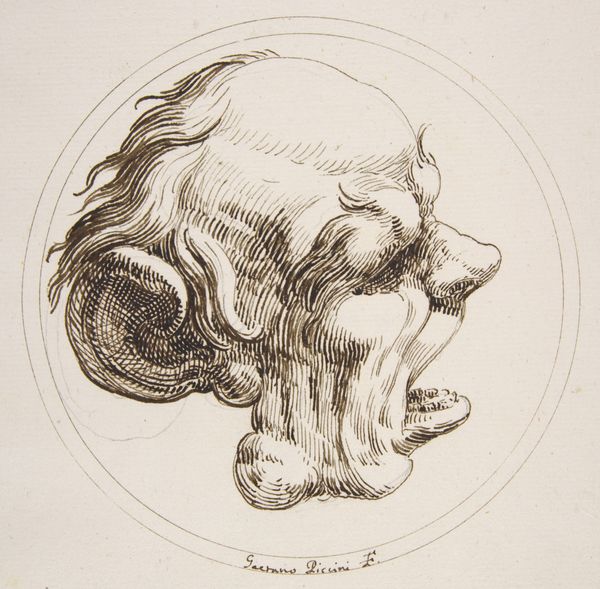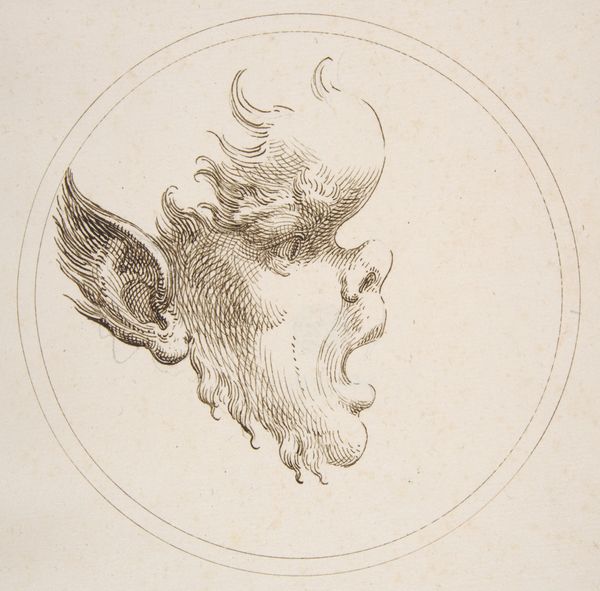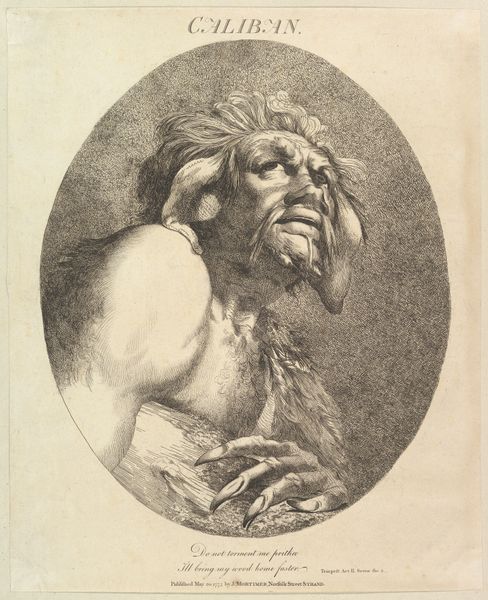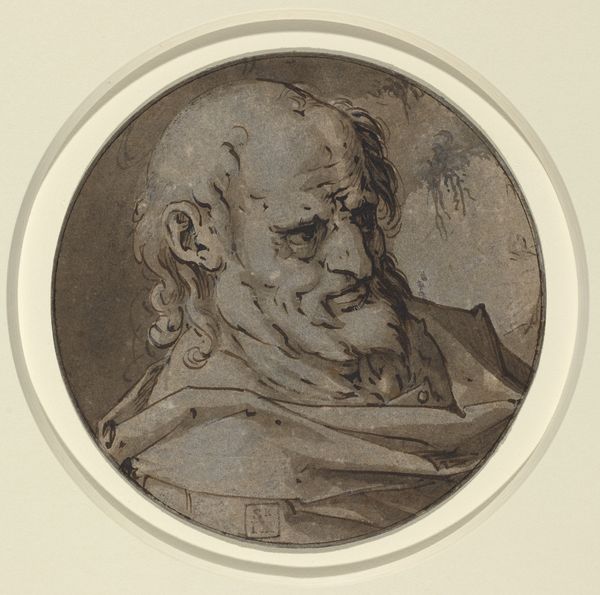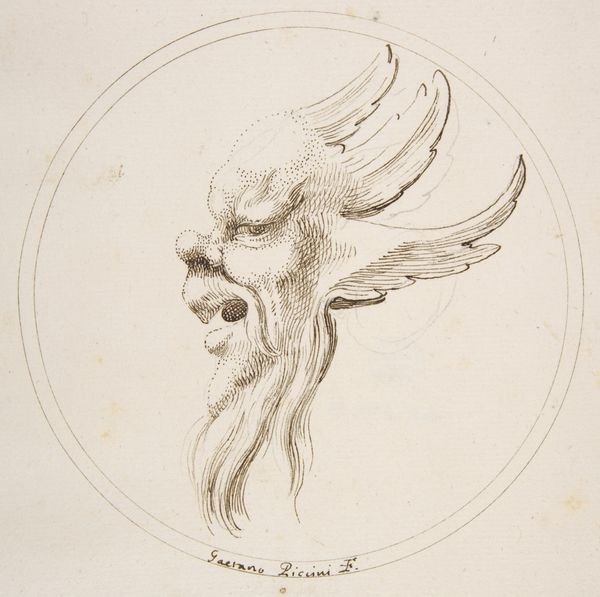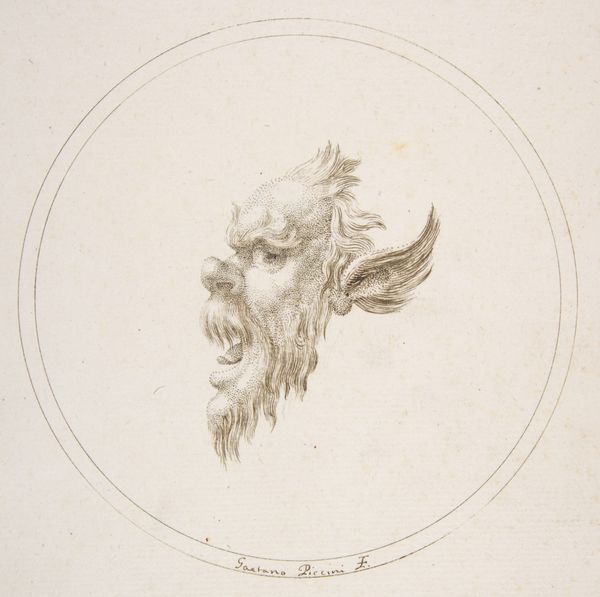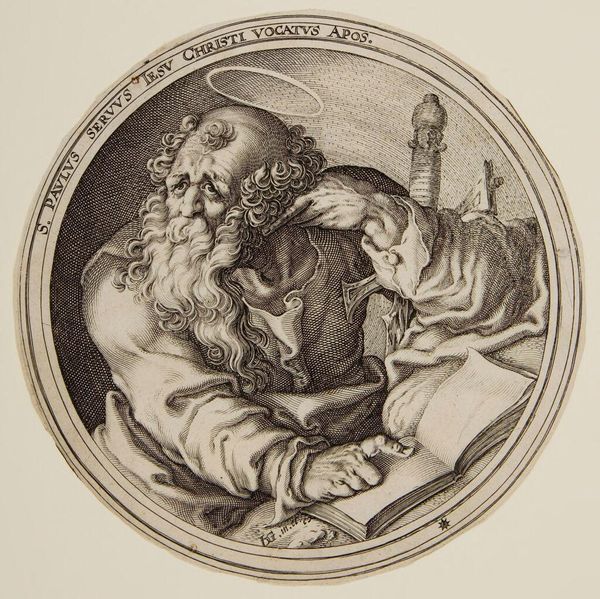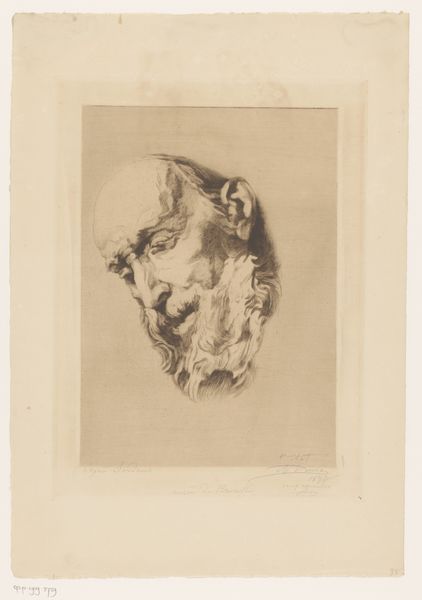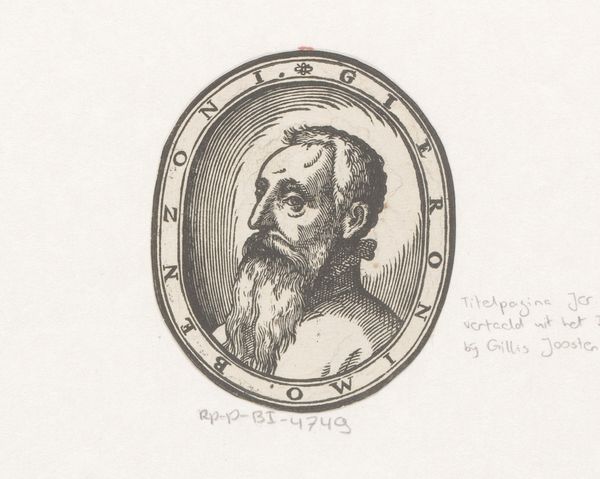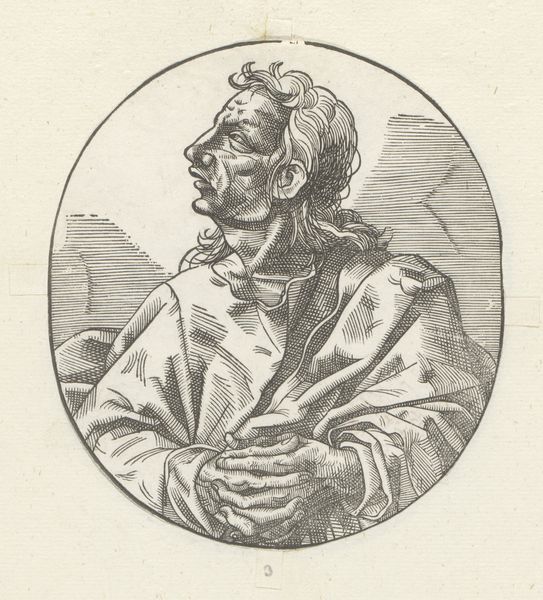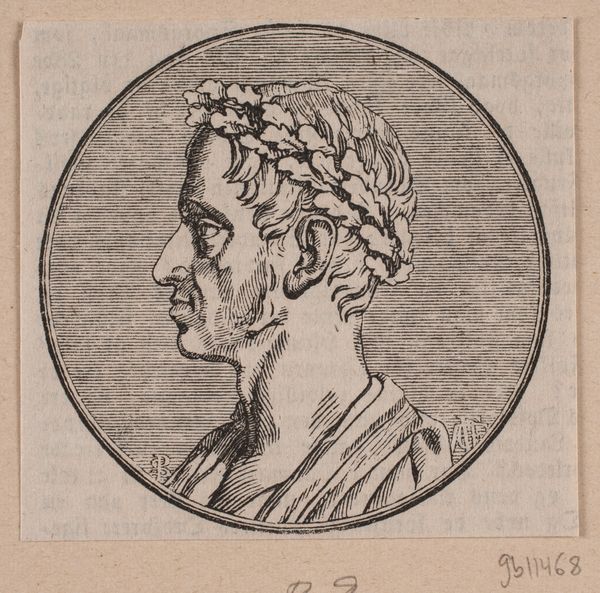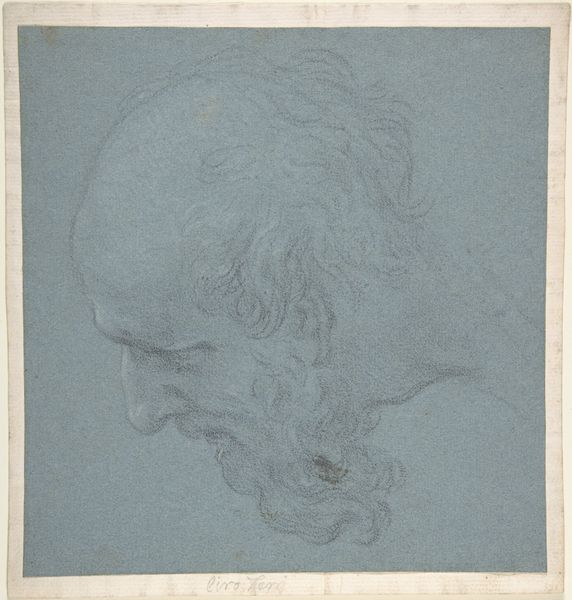
drawing, print, ink
#
portrait
#
drawing
#
baroque
# print
#
figuration
#
ink
#
pencil drawing
#
academic-art
#
profile
Dimensions: sheet: 12 7/8 x 8 1/2 in. (32.7 x 21.6 cm)
Copyright: Public Domain
Curator: Looking at "Human Mask Looking to the Left within a Circle" by Gaetano Piccini, dating back to 1727 and housed here at the Metropolitan Museum of Art, my immediate reaction is to examine the use of line. There’s a deliberate, almost academic precision in the rendering of this profile. Editor: Yes, its immediate impact is one of caricature. It exaggerates and deforms; the very nature of a 'mask' demands that it's separate from the actual human being and also the context in which it has been made. This doesn't quite achieve 'high art', for me at least, and leans towards 'craft' for a very different purpose, one perhaps of production and making, that would eventually involve labour and materiality. Curator: That is a fair point. The formal repetition of those strong diagonal lines mimics texture, creating volume, defining form in this two-dimensional space. Observe the deployment of line to delineate the contours of the nose or the furrowed brow – how line acts as both structure and surface, and creates an optical sense of reality. The Baroque use of light and shade gives a solidity to this 'mask' of humanity, so even within its circular frame, one is conscious of the tension of shape and composition. Editor: Exactly, and the choice of materials speaks to that. Pen and ink drawing in this period – it was not necessarily seen as precious in itself. It’s interesting to ponder what it could have been intended for originally: studies, prints, or preparations for other projects. How might these means of production have influenced the design to either celebrate or resist the elite circles? Curator: And that's where, structurally, the composition fascinates, I keep returning to the tension within the rendering. Is this study about capturing a universal human condition, an individual study? Or is this "mask" really something commenting about external impressions. Is it an idea rather than observation. Editor: Perhaps in our engagement we are only discussing the semiotics in a capitalist society. As we gaze upon it, the means of production are forgotten as it transcends into an "art object." Curator: Food for thought indeed. This drawing’s rigorous composition, offers new points with each exploration of Piccini's "Human Mask." Editor: Ultimately this exploration demonstrates how the artist, in whatever media and from whatever period, asks the same question we still ask ourselves today: What does it mean to be human?
Comments
No comments
Be the first to comment and join the conversation on the ultimate creative platform.
